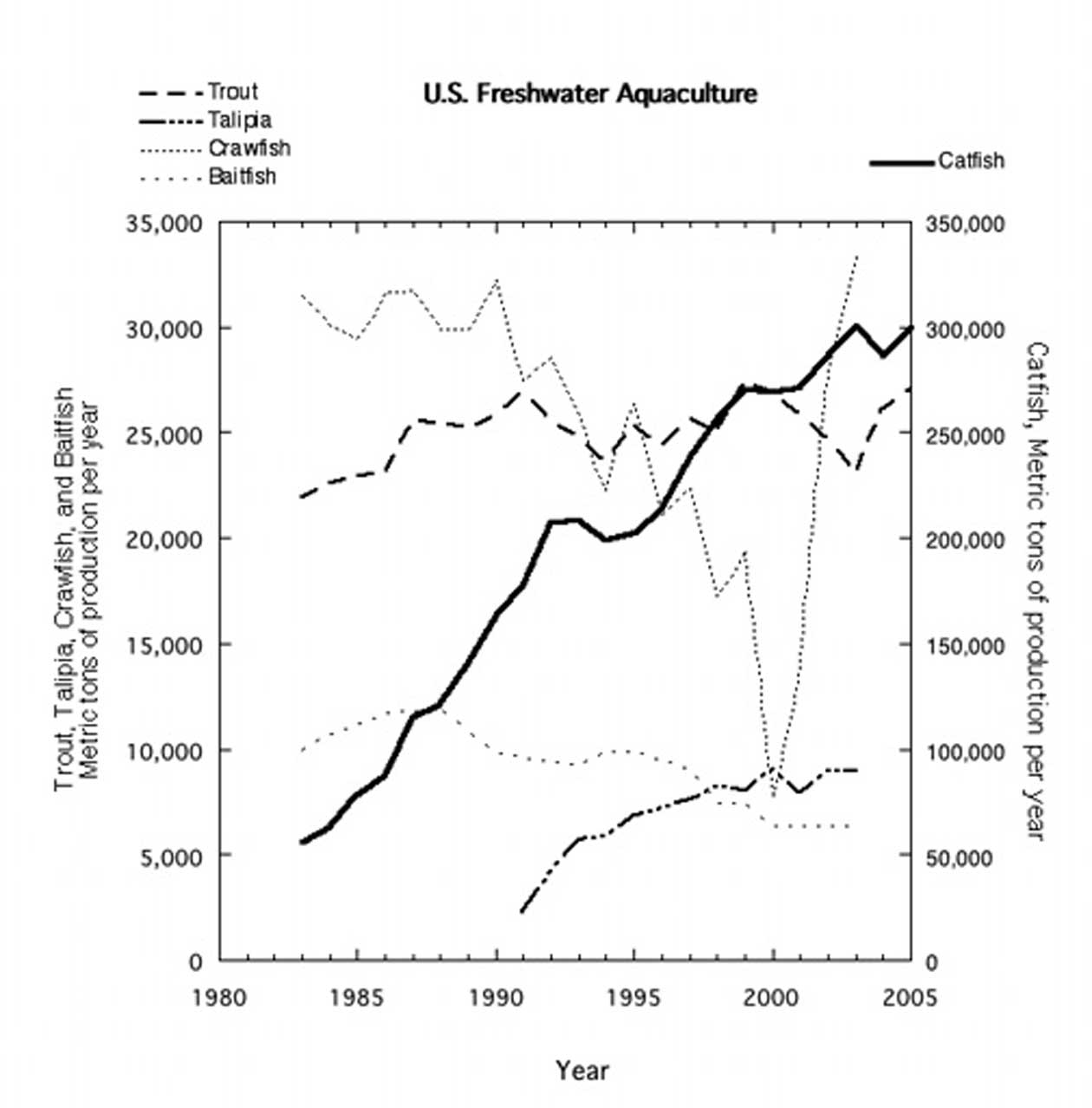Forestry research and development has increased significantly since 1945. Technologies, especially mechanization, have been developed to achieve faster and more efficient harvests and to access and harvest timber in areas previously considered too fragile for harvest.
Across NAE, there has been an overall decrease in forest biodiversity. However, adoption of ecosystem-based approaches to manage national forests and grassland has changed the way US and Canadian public/federal land managers administer natural resources. Forest management for multifunctionality is an increasing trend in Europe, with the exception of Russia where productivity is still the key driver of management.
Forestry management continues to provide livelihoods and a cultural focus for large numbers of people in NAE and the forestry product industry has grown rapidly to accommodate increased demand for timber and other forestry-derived products.
2.7 Changes in Aquaculture Production
2.7.1 North American aquaculture
It is useful to divide aquaculture into two distinct types, freshwater and salt water (Figures 2-17, 2-18, 2-19 and 2-20). As a whole, Canadian aquaculture between 1986 and 2004 has grown at an annual rate of 20%.
In the US modest amounts of fresh water aquaculture, dominated by catfish culture, have been practiced since at |
|
least the 1940s. In 2003, there were some 300 tonnes of catfish raised, representing 71 % of all US aquaculture, fresh and salt water by weight; trout, talapia, crawfish and bait-fish comprised the remainder. Canadian freshwater aquaculture consists primarily of the rainbow trout and secondarily brook trout.
In Canada, the major aquaculture crop is salmon. The majority of the cultured salmon, 55 to 60%, is exported to the United States, with the other two largest export markets, Japan and Taiwan, each representing less than 2% of production. Steelhead trout is the other seawater finfish aquaculture, but is produced in much lower amounts (Figure 2-19). Through the late 1980s and 1900s there was a rapid expansion of clam and especially mussel aquaculture such that mussel is now the major shellfish aquaculture product by weight and by value (Figure 2-20).
By contrast, before the 1990s US saltwater aquaculture was dominated by oyster culture. However, starting in the mid 1980s and continuing through the 1990s there has been a very large expansion of salmon aquaculture to become the dominant saltwater product. Although, salmon is the currently largest saltwater aquaculture harvest by weight, the dollar value of oyster production ($63 million in 2003) is greater than that of salmon ($54 million).
Aquaculture products are growing in importance in both the US and Canada, although they are less than 15% of wild fishery landings. Aquaculture in 2003 represented about 10% of US wild fishery landings. The total Canadian com- |

